We spent a delightful three days in the historic, charming city of Bath, situated alongside the River Avon. I'd never been before and was so looking forward to this trip. Did it deliver? Oh yes!😃
Given city status by a royal charter granted by Elizabeth I in 1590, the city became popular as a spa town during the Georgian era. As the population grew, many Georgian buildings made from local creamy/ sandy coloured Bath stone sprung up, in streets and squares created by architect John Wood, the Elder (1704-1754).
The city takes its name from its hot springs, which are thought to have healing properties. It was originally called Aquae Sulis (Latin for the 'waters of Sulis') circa 60 AD, when the Romans established baths and a temple on the banks of the River Avon. The hot springs which burst through the earth's crust, though, were known about before even then.
We took the train from London Paddington, and I just had to track down the statue of the famous, friendly bear who was found at this station. You will find him on Platform 1...
...This Paddington Bear is in the Paddington Bear shop- the only shop in the world dedicated to Paddigton Bear merchandise. I thought he was the statue I should have been looking at, until I was corrected...
We stayed at Premier Inn Bath, which was very central and reasonably priced. Bath is not a big city and therefore easy to traverse on foot. Armed with my map, we made our way to the Fashion Museum. How could a fashionista like myself not visit there? As well as their regular, static collection of historical and contemporary clothing named A History of Fashion in 100 Objects, there was also a divine Royal Women exhibition taking place.
Photography was only allowed without a flash, so apologies for the less-than-best quality of some of these.
My first Bath photo just had to be of shoes! These are from the 1740s and are leather-
covered wooden clogs...
Georgian farthingale...
Fan-tasy cabinet. Some Regency outfits are visible in the background...
1860s dress...
Boots 'n' shoes...
Victorian crinoline and bustle dresses...
I'd wear this corset...
The Edwardians...
First World War and 1920s...
1930s glamour. The dress with the red tie at the back looks like something from the film Atonement. Or the modern version of Upstairs Downstairs...
Children's clothing. I took this photo because I liked the cute shoes- I would!
1980s...
1990s. I believe this is by McQueen...
They also have an annual Dress of the Year section. This included one outfit by Dior and one by Louis Vuitton- but they didn't do much for me so I didn't even bother to photograph them!
The Royal Women exhibition showcased the styles of four royals who were never monarchs, starting with Queen Alexandra: the consort of jovial Edward VII. A renowned beauty, nevertheless she was considered to be unfashionably slim- curves were all the vogue- but didn't let this bother her and instead used it to her advantage; to show off her tiny waist.
This was actually Queen Alexandra's wedding dress, but she had it altered so that she could wear it again. I've seen this before- at a royal wedding dress exhibition at Kensington Palace, around 2002/2003.
Here's a PDF of how it originally looked. As a kid I loved this dress, and thought it sooooo dreamy and romantic. It's a traditional crinoline and, interestingly, it's off-the-shoulder, which is not considered appropriate for royal brides nowadays.
George V's consort, Queen Mary was much more statuesque and her clothes were considered very upright, staid and over-upholstered, even for her time. But there's no doubting that they were finely worked. Apologies for the poor quality of this photo- I tried to play around with it but not much compensated for the lack of a flash.
The Queen Mother...
Our queen's sister, Princess Margaret, was another society beauty...
This is the outfit that Sophie, Countess of Wessex wore to Prince William and Catherine Middleton's wedding. She is featured because this area is part of the Anglo-Saxon kingdom of Wessex. The name Wessex is an elision of the old English form of 'West Saxon.'
There is an area devoted to dressing up, and here's the Vain Old Tart in her top hat...
The Fashion Museum is part of the Assembly Rooms, which were opened in 1771 as a place for music and dancing. Today, they can be hired out for weddings, parties and events- one occasion (it looked like a business function) was going on in the Great Octagon so we couldn't go in there.
This is the Ball Room...
The Tea Room...
We then had an architectural walk. Here is the nearby Circus, which was completed in 1768...
The Royal Crescent is a majesctic row of terraced houses built between 1767 and 1774. They were designed by the architect John Wood, the Younger (1728-1782) who was the son of John Wood, the Elder. I feel a bit patronising pointing that fact out! Originally named The Crescent, the 'Royal' part was added at the end of the 18th century, after Prince Frederick, Duke of York and Albany had stayed there.
The houses offer sweeping views over Royal Victoria Park...
By now it was gloaming. You can see the light beginning to fade...
The next day, bright and early, we visited the Jane Austen Centre. As a writer, how could I not?! Jane Austin (1775-1817) was an English writer who wrote six novels: Pride and Prejudice; Emma; Northanger Abbey; Mansfield Park; Sense and Sensibility and Persuasion. I've read all but the latter and the former is a permanent feature in my bookcase (I couldn't possibly have kept all the books I've read- I pass them on to charity, otherwise I'd have a whole library in my flat!) She lived in Bath from 1801- 1806, and reports differ with regard to whether she enjoyed her time residing here or not. One thing is certain; and that is that the city features strongly in two of her novels.
Despite the fact that all her work was about pursuing a suitable marriage partner and the place of women in society during her time, she never married. I kind of get the impression that she didn't want to have babies- which came, in those days, as part and parcel of the marriage burden. As I didn't buy anything else from Bath, I treated myself to this book, so once I've read it I will let you know my opinion.
The exhibition starts with a short film and, next to this is a room I dubbed 'The Persuasion room' as it was devoted to details of the latest film of the book, which is due to be released next year.
We then had a talk from a lady in Regency costume about our heroine. Here is her family tree...
We were led down a corridor filled with portraits of Jane...
We read some facts about her life on the walls and then turned into a room which was a bit of a mock-up about how Bath was when she lived here. Here is a haberdashery. To the left of this is a selection of perfumes- Rose Water, Orange Blossom and Lavender- which ladies would have worn during those times...
Regency dresses. To the side of this you could sample Bath Oliver biscuits, which are rather like a water biscuit...
Very pretty! You can try on some of the costumes and you can see them reflected in the mirror, hanging up.
Bath scene and lady...
Handsome Colin Firth caused quite a stir when he appeared as Mr. Darcy, in the 1995 adaption of Pride and Prejudice. Apparently, he is nothing like the real Mr. Darcy would have been...
Study, with the corner of the SuperDean trying out writing with a quill. The blue blur is the feather on the end...
Card table...
We finish with a Jane dummy. I quite enjoyed my tour of this house. The costumed guide was very friendly and informative.
Just outside the museum is Queen Square, where Jane first stayed in Bath, for a short time in 1799. The obelisk in the centre was erected by Beau Nash (1674-1751) who was the Master of Ceremonies at Bath (as well as being a leader of fashion and something of a dandy) in 1738, in honour of Frederick, Prince of Wales.
Up the road from the museum, at 25 Gay Street, is the house where Jane lived for a few months after her father's death.
Jane's final Bath residence was in Trim Street, which was considered down-at-heel. You can see it here, through the archway.
Later that day, we did a half-day coach tour to Stonehenge. This was worthy of its own blog, which you can find here:-
When we arrived back we popped into Sally Lunn's, which is home of the famous, award winning museum and eating house...
Sally Lunn was a French Huguenot refugee, who anglicised her name from Soli (Solange) Luyon and found employment with a baker, circa 1680. She introduced the baker to the French festival type breads- or bunns- which went on to become famous, and forever associated with her name, the house and Bath itself. We didn't sit down to eat but we did buy a takeout bun, which was delicious. They are HUGE and good value for money at £2.88 each. They reminded me of a less sweet version of a brioche. We bought pate from Tesco, slathered it on generously, and had half-a-bun each in our hotel room.😁
The success of the bunns meant that the baker changed his wood-burning faggot oven into a coal-burning flue oven, so that he could bake more products. It was in use until the late 1890s. The oven itself dates back to around 1100, when the building was a Benedictine monastery. This was the likely site for the monk's refectory, which was rebuilt in 1482, and it's this date which was placed on the building.
The museum is in the cellar of the building, down a set of stairs past this old tap...
Sally at her oven. The bunn recipe- rediscovered in the 1930s in a secret cupboard- is passed on with the deeds to the house....
The museum only consists of one room, with the shop to the side...
In another part of the museum, the cellar floor was excavated in 1984-85 and this excavation showed the remains of a Roman building that could have been an inn or guesthouse. It would have stood on the site circa 200 AD.
The next day we visited the Roman Baths. Do not go home without doing it! It is a spectacular and amazing (and I do not use that somewhat overused adjective lightly!) piece of history. It deserves its own blog, and here's the link:-
After the baths, we took a wander, initially in search of a Bath Bun. Not to be confused with the Sally Lunn Bunn, it's smaller and sweet and laced with fruit and sugar. The Bath Bun is a tea shop opposite Sally Lunn's and they certainly serve them but... I wanted to see one and take it away, so with nothing on display and no takeout price list anyway, we mooched on. This, I must admit, was all my fault- I could have popped in and asked but I was in one of my "I don't really feel like interacting with another human being" moods...
Opposite is a chocolate shop and I liked this chocolate Regency lady. She certainly looks authentic!
Bath Abbey was founded in the 7th century, reorganised in the 10th century and rebuilt in the 12th and 16th centuries. It was majorly restored in the 1860s and is an Anglican parish church. We popped our heads in, but all my photos were taken outside.
This was taken from the Roman Baths...
Stained glass window...
We carried on sightseeing, but this street through a gap was previously taken from the Roman Baths...
This fountain reminds me of Aquarius, the water bearer...
The bandstand in manicured Parade Gardens...
Pulteney Bridge (completed in 1774) has shops on both sides. We did consider having tea in one of the bridge tea rooms but... you guessed it, I could see their menu from through the window and I didn't see Bath Buns listed. We even popped into a Greggs bakery later and found Chelsea Buns... but no Bath Buns!
The weir...
Once you pass the weir, the water looks so peaceful...
Down on the bank...
Next to the weir...
North Parade bridge...
View from North Parade bridge...
This lit tree was right near our hotel and was very pretty...
I thoroughly enjoyed my stay in Bath and will definitely return.😁😁😁
Food-wise, I recommend:- The King Of Wessex, a Wetherspoon pub right next to our hotel. The breakfasts we had were all superb, as was the evening meal we had on the first night. Service was quick, too.
Food-wise, I don't recommend:- Cafe Rouge. We had such a nice Valentine's Day experience in their Bournemouth branch last year that we decided to try their set menu again this year. The restaurant looked lovely and I liked the way they'd scattered little sparkly red hearts (which followed me around; to the pub afterwards and back to the hotel!) over the table. The starters and desserts were fine, but we waited for over 40 minutes for our mains, which were not as warm as they could have been. My partner's steak was also not of the same quality it was last year. We moaned and got a free glass of champagne, and the waitress was understanding, but even so... Staff your restaurants fully when you know it might get busy (it wasn't) and don't leave food sitting in the service area forever. Rant over.
We left the next day and, sitting at the station, agreed that it was the most picturesque view we'd ever seen from a train platform...
TTFN
The Miss Elaineous
XXXXXXXXXXXXXXXXXXXXXXXXXXXXXXXXXXXXXXXXXXXX













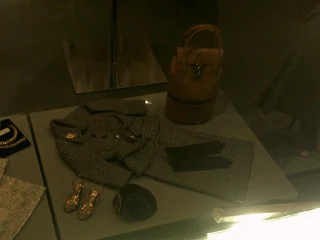





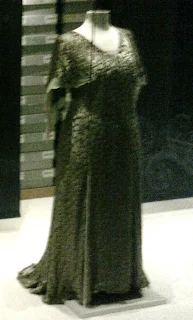










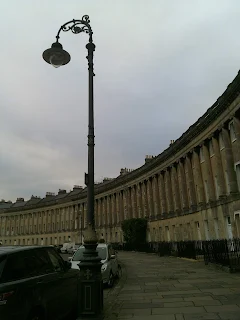


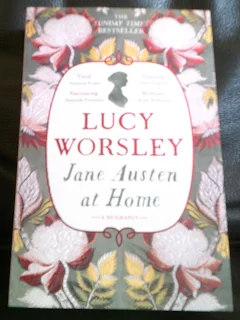


















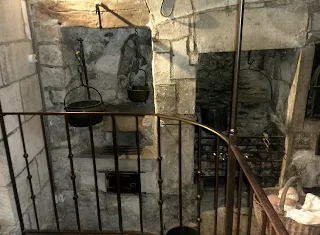



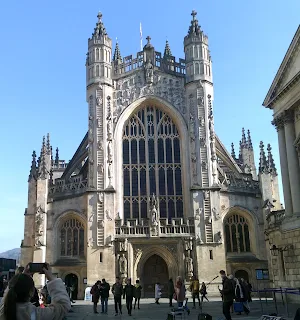





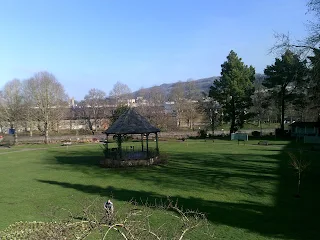










No comments:
Post a Comment